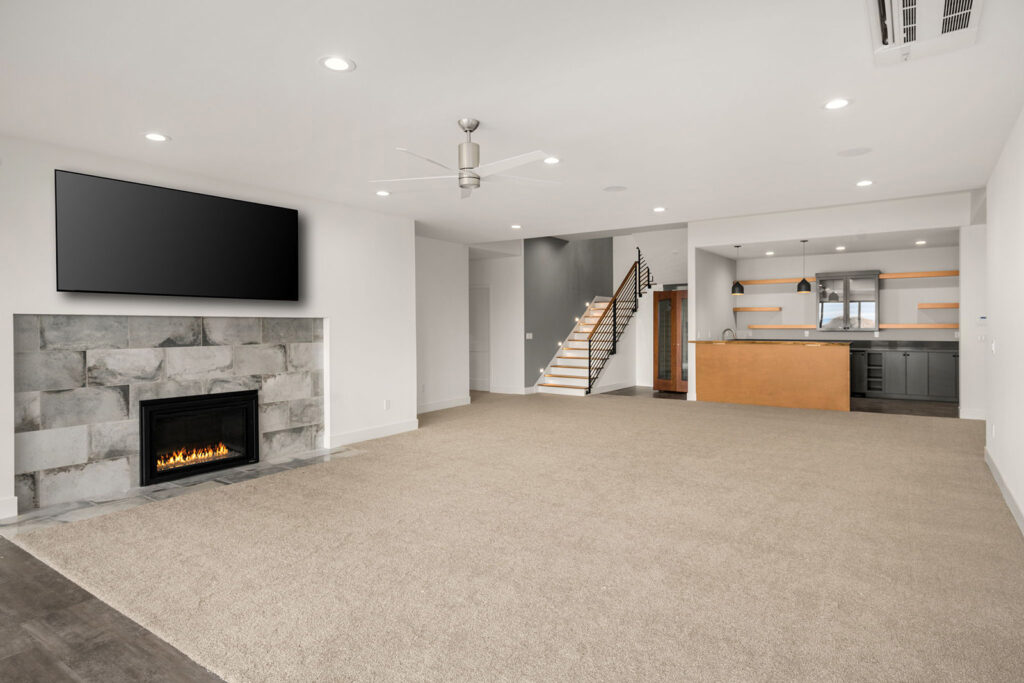
Chris Town Here, Owner Of Town Construction And Development And Here With Some More Great Tips! Choosing Materials for Your Edmonds and Shoreline Home
While building or renovating a home, it is essential to select high-quality materials. The durability, practicality, and aesthetic value of your home will all be affected by the materials you decide to use. With so many options, it could be challenging to make the best choice. These are seven things to consider when choosing materials for your home.
A Lot of Things Can Come into Play When Choosing Materials
A well-functioning structure is the result of a good design and the use of high-quality materials. Building materials have a significant impact on construction quality. The building’s longevity, stability, and personality will all be affected by the materials used in its construction. So, one must exercise caution and accuracy when choosing building materials. There are a lot of things to consider when renovating a home. So the most efficient approach to choosing materials that fulfill your demands is to compare their stability, upkeep, attractiveness, and cost. There are many construction materials to choose from, and it can be challenging to choose the best ones to meet our varied needs.
Climate and Weather Conditions
While building a home, it’s crucial to take into account the local climate and temperature. If you happen to reside in an area that frequently experiences high humidity, heavy precipitation, or extreme temperature swings, you might want to reconsider using certain materials. Wood can rot and deteriorate in damp places, and metal can expand and shrink depending on the temperature. Materials like concrete, brick, and stone, on the other hand, are resilient in a wide range of climates and are suitable for use almost anywhere.
It’s important to consider the climate when choosing materials
Durability and Maintenance
You should also think about how long the materials will last and how much upkeep they will require when making your final decision. Wood and various types of flooring, for example, may require routine maintenance or repairs to keep their attractiveness and functionality. Our friends at professionalmoverottawa.com will tell you how many people they helped move into their new homes had problems after choosing the wrong materials. Such decisions could lead to catastrophic results. If you live in a place that has recent rainfall, make sure to plan accordingly. Stronger and requiring less upkeep are materials like concrete and stone. As you make your material selections, remember how much you’ll spend on repairs and maintenance over time.
Budget
When deciding what to employ to build your home, your budget is obviously a major aspect. More affordable options include vinyl and laminate, while more expensive options include hardwood floors and granite countertops. When estimating costs, don’t forget to include not only the price of materials but also the price of labor and any specialized tools you may need. Keep in mind that some more expensive materials may actually end up saving you money in the long run due to their reduced maintenance and repair needs.
Aesthetic Appeal
The aesthetic value of your home should factor into your material selections. It’s important that the materials you pick complement your home’s design aesthetic and reflect your personal taste. Please take into account the material’s color, texture, and pattern, as well as its overall appearance, in the space. If you’re not sure what materials to choose, you might want to consult an interior designer or architect. However, there are always some renovation trends you’ll be seeing. It’s important to stick to the thing you like. Don’t be influenced too much by recent trends. Though some of them might be to your liking, so be sure to check them out as well.
An aesthetic appeal will be impacted when choosing materials for your home.
Environmental Impact
A growing number of homeowners are thinking about how their material choices may affect the environment. Toxic substances released during production or the use of materials made from nonrenewable resources are only two examples of how certain materials can have an adverse effect on the natural world. Bamboo flooring, recycled glass countertops, and reclaimed wood are just a few examples of eco-friendly and long-lasting material options to consider. The carbon footprint of these materials is small because they are made from renewable resources.
Safety and Health
Think carefully about how choosing materials for your home can affect people’s health and safety. Some paints and coatings may include carcinogenic or otherwise harmful chemicals. Materials that release volatile organic compounds or other harmful substances should be avoided if at all possible. Take into account the materials’ possible hazards, such as the flooring’s slip resistance and the insulation’s fire resistance.
Building Codes and Regulations
Finally, think about building codes while choosing materials for your home. There may be restrictions or licensing requirements on certain products in your country. So be sure to check all the regulations homeowners need. Whether it is for home expansion or the material, you plan to use. It is crucial that the materials you select adhere to all applicable rules and regulations to avoid any potential legal issues. Consult a competent builder or architect familiar with your area’s regulations if you have any questions.
Be sure to know what regulation applies to you
These Are Some Modern Home-Building Materials that Might Be of
Synthetic shingles
Fortunately, advancements in synthetic shingle technology have led to a marked improvement in quality. There are several reasons to use synthetic shingles for your roof, including their longevity, resistance to the elements, low price, and ability to mimic the look of any other material. Therefore, home builders and building material companies consistently recommend this synthetic substance when giving advice on the best material to employ when constructing a house.
Fiber cement
The siding is a very significant part of any house. Despite the availability of various siding options, fiber cement siding remains a popular choice among builders and homeowners. Like synthetic shingles, fiber cement can be made to seem like natural materials like wood or stone. However, they outperform more common building supplies in a number of respects, including longevity, resistance to corrosion, fire, and pests, and adaptability to a wide range of climatic situations.
Conclusion
When choosing materials for your home, choose materials that will complement your home’s style and enhance its functionality for years to come. By carefully considering the factors highlighted in this piece, you’ll be able to make a choice that suits your needs, finances, and tastes; whether building from scratch or updating an existing home, using high-quality materials is a long-term financial and aesthetic commitment.
![]()
“Be good to your house and your house will be good to you:

All solutions for home living have some advantages and disadvantages…“There are no perfect solutions out there, only the ones that are perfect and work for you.”
Chris Town
![]()
Kindly rate our blogs by clicking on the Google link below:
https://g.page/r/CQESWldbXvqJEAg/review



